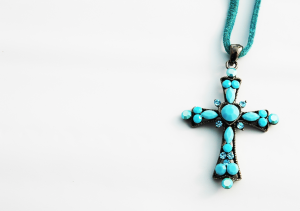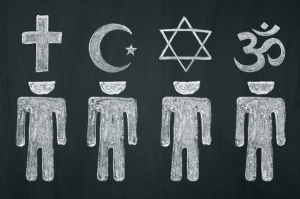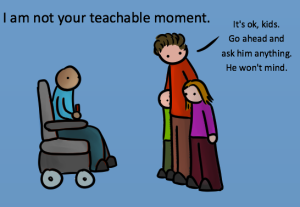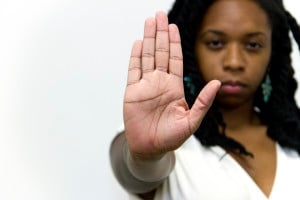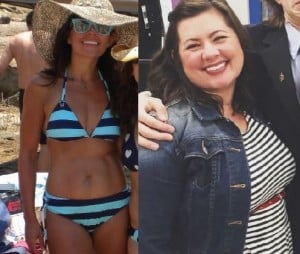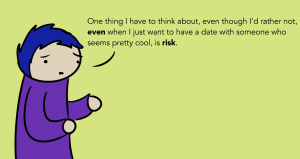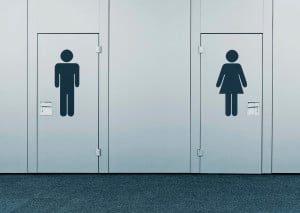
Source: Huffington Post
After attending a training about intimate partner violence from my agency, staff at a local doctor’s office found themselves calling our hotline. They had a lesbian woman in their exam room who was terrified of her highly agitated abusive partner sitting in their waiting room. There had been significant emotional and physical abuse in their relationship.
When it was over, the survivor would be secretly ushered out the back door into a waiting cab to bring her to shelter, and law enforcement would become involved.
Of course, we then had to warn crisis line advocates who approve people for shelter to be extra cautious when screening. You see, some lesbian abusers have pretended to be victims of intimate partner violence so that they could gain entry into shelters and find their partner.
Cunning, isn’t it? Hard to believe?
The idea that intimate partner violence occurs in lesbian relationships may seem ridiculous. I mean, intimate partner violence only happens in heterosexual relationships, right?
A lesbian can’t hold societal power over her partner like a man. She, too, is oppressed by society. People couldn’t care less about her or her relationship when it comes to discussing potential power imbalances.
Well, what if I told you that one of the reasons why a woman can get away with abusing her same-sex partner is precisely because of that invisibility?
This belief can prevent lesbians from seeking help when they are in an abusive relationship. After all, who’s going to believe them?
And this is precisely why we need to be having this conversation.
As is a basic tenet of intersectionality, oppression affects people of intersecting identities differently – and as such, women in same-gender relationships experience multiple layers of oppression, and therefore experience intimate partner violence in unique ways.
So here are four myths about intimate partner violence in lesbian relationships that can prevent women from seeking help.
Myth #1: Women have equal power in a relationship, so the violence must be mutual.
For whatever reason, when it comes to intimate partner violence, people get stuck on muscles and brute strength.
Many people believe that because women are supposed to be caring and nurturing, they don’t behave violently in relationships, and that since they may be of relatively equal size and strength, there should be no way that one woman can truly dominate and abuse another woman.
People somehow believe that the physical similarities make the dynamics equal and therefore, completely ignore the numerous other factors that can create power imbalances.
Saying that inequalities don’t exist means that you could be ignoring factors such as racism, internalized homophobia, ableism, unequal wealth, age, and many other factors that can create a power differential in a relationship.
The truth is that physical violence and threats do occur in lesbian relationships, despite the fact that many like to believe that women are incapable of it.
17-45% of lesbians have reported being a victim of at least one act of physical violence at the hands of a lesbian partner, and up to 50% of lesbians have reported some type of sexual abuse. In a survey of over 1,100 lesbians, slightly more than half reported being abused by a lesbian partner at some point in her lifetime.
And make no mistake: This is not “cat fighting.”
One study found that 10% of lesbians reported physical abuse, such as hitting, kicking, and biting. Of the 21 intimate partner homicides that occurred in same-sex partner relationships in 2013, 19% of victims were white, cisgender lesbians. This is second only to gay men.
This is usually the time when someone says to me, “Robin, I have seen women in these relationships, and they both give as good as they get.”
Intimate partner violence isn’t just about who-hit-who-first or who yells the most.
Intimate partner violence is a pattern of coercive and abusive behaviors that are used to maintain power and control over one’s partner. While the person being abused in a lesbian relationship may get the “upper hand” in some altercations, they aren’t the person in “control” of the relationship.
Physical assaults may go back and forth, and so can hurtful words. That’s why someone must also look at the power dynamics in the relationship to see what is really going on.
Myth #2: Sexual abuse doesn’t occur in lesbian relationships.
Society has a hard time accepting that sexual abuse is anything other than violent, forced penetration (usually in this case, penis-in-vagina penetration is implied), so it’s not surprising that people don’t believe sexual abuse doesn’t occur in lesbian relationships.
But the truth is that sexual abuse includes much more than this limited definition.
We know that coercion plays a huge role in sexual abuse, as does the threat of violence. Sexual degradation can systematically tear down someone’s sexual self-esteem and can lead a person to submit to sex, or sex they find painful or humiliating, just to get their partner to leave them alone.
Saying that you doubt someone’s sexuality, questioning their gender presentation, threatening to “out” them if they fail to yield to you, or humiliating them in front of others by sharing private sexual information are all other examples of sexual abuse.
These abusive tactics can be used in any relationship, regardless of gender.
But it’s also important to note that forced sex can (and does) occur in lesbian relationships. A woman can overpower another woman. This is hard for some people to believe, but it does happen.
Myth #3: Lesbians and heterosexual women have the same challenges when leaving an abusive relationship.
First of all, let’s be clear that leaving an abusive relationship is never easy – for anyone. Many of the tactics for abuse in relationships are used in order to keep a survivor in the relationship and feeling stuck there. And even if on the outside, it looks like there’s an easy getaway, often there are reasons why leaving the relationship doesn’t feel like an option for people.
That said, lesbians have unique challenges to leaving abusive relationships that heterosexual women do not face.
Homophobia (in conjunction with heterosexism), for example, is a major societal barrier that doesn’t impact heterosexual women, but frequently prevents lesbians from seeking help. Just think: How many resources for IPV survivors do you know? Now how many of those resources specifically advertise services for the queer community?
Further complicating things, some lesbians might struggle greatly with internalized homophobia.
Having grown up in our heterosexist, Christian-dominated society, many lesbians experience shame and even self-loathing about their sexuality that makes them more embarrassed to ask for help and that their abusers can play off of. And if a woman isn’t already out, she faces further stigma in attempting to seek help because she’ll be forced to out herself first.
That is, it’s impossible to know if you will be assisted — or if you’ll be shunned.
Family and friends may not know about her sexual orientation and might reject her if they did. This is one reason why some survivors feel that reaching out to the people they know is actually more frightening than remaining in the relationship. Couple that with the fact that many abusers use isolation as a tactic to keep their partners from having access to reach out to loved ones, and you’ve got a difficult situation on your hands.
Abusive lesbians can use (both social and internalized) homophobia to their advantage when trying to control and maintain power over their partner.
They can threaten to “out” their partner to their workplace, effectively jeopardizing their employment. For lesbians with children, the threat may be to “out” them to their child’s father, setting in motion the terrifying thought of losing custody of their children since the court system is just as likely to be critical of her sexual orientation.
Leaving an abusive relationship can become even more difficult for lesbians of color who not only have to face the issues of sexism and homophobia, but also racism.
The idea of seeking assistance through the court system or law enforcement may be more frightening than remaining in the abusive relationship because of the oppression by both systems.
Lesbians of color can feel particularly isolated. They may be completely underrepresented by predominately white lesbian groups that may talk about lesbian abuse as if it is the same for everyone. And whatever comfort a woman of color might usually find with people of her own race may be completely stripped away from her once her sexual orientation is revealed.
Not to mention the issues of immigration status and disability!
With each individual challenge, the degree of difficulty a survivor faces in an abusive relationship increases and permits the abusive partner to maintain more control over the relationship.
Myth #4: The abuser is always ‘the butch.’
First, a butch is not always present in lesbian relationships.
And second, there is no inherent link between masculine women and violent behavior. If there were, then we would expect every masculine being to be violent.
It’s true that some butch women use their masculine nature to abuse other women, but certainly not all. Everyday Feminism has an excellent article about this.
This myth can put butch women at a grave disadvantage when they are attempting to leave an abusive relationship. Abusers are not naïve to stereotypes, and a feminine-presenting lesbian can use them to control their partner. They can do this by threatening to tell law enforcement or others that they are actually the victim, knowing that they will likely be believed because their partner looks more masculine.
Remember, someone has to have the will to commit these behaviors, and that may not be who you expect.
***
Intimate partner violence in lesbian relationships is no joke. It’s very serious, and too many women are getting hurt because of these myths and our silence. We all have a responsibility to help.
You can make yourself a safe person for a survivor to open up to by speaking out with factual information, offering support when we can, and not making excuses for lesbians who are being abusive.
For more information on how intimate partner violence affects the LGBTQA+ community differently, please explore The Network/La Red.
[do_widget id=”text-101″]
Dr. Robin Landwehr is a Contributing Writer for Everyday Feminism She’s a mental health counselor and an unapologetic feminist. She holds a Doctor of Behavioral Health degree from Arizona State University, a M.S. degree in Mental Health Counseling from Capella University, and is a licensed counselor in North Dakota and Florida. She is a National Certified Counselor through the National Board for Certified Counselors. Robin has worked in several areas of human services including: domestic and sexual violence, substance abuse, homelessness, child abuse and neglect, mental health disorders, and health concerns that are affected by our behaviors. You can follow Robin on Twitter @RobinLandwehr1 or visit her sometimes neglected personal blog at the Hippie in Me Blog.
Search our 3000+ articles!
Read our articles about:
Our online racial justice training
Used by hundreds of universities, non-profits, and businesses.
Click to learn more





